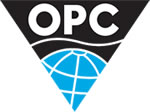Europe / Caspian / CIS
Country profile: Kazakhstan
| Location: | Central Asia, northwest of China; a small portion west of the Ural River in eastern-most Europe |
| Climate: | continental, cold winters and hot summers, arid and semiarid |
| Terrain: | extends from the Volga to the Altai Mountains and from the plains in western Siberia to oases and desert in Central Asia |
| Size: | 2717300 sq. km total (Land area: 2669800 sq. km Water area: 47500 sq.km) |
| Population: | 15,340,533 (July 2008 est.) |
| Languages: | Kazakh (Qazaq, state language) 64.4%, Russian (official, used in everyday business, designated the "language of interethnic communication") 95% (2001 est.) |
| Government: | republic; authoritarian presidential rule, with little power outside the executive branch |
| Capital city: | Astana |
| Legal system: | based on Islamic law and Roman law; has not accepted compulsory ICJ jurisdiction |
| Currency: | tenge (KZT) |
| Licensing: |
Country profile
Kazakhstan has the Caspian Sea region's largest recoverable crude oil reserves, and its production accounts for over half of the roughly 2.8 million barrels per day (bbl/d) currently being produced in the region (including regional oil producers Azerbaijan, Uzbekistan, and Turkmenistan). Kazakhstan oil exports are the foundation of the country’s economy and have ensured that average real GDP growth has stayed above 9 percent for the last 6 years.
Real GDP growth during 2007 averaged 9.5 percent. Kazakhstan's growing petroleum industry accounts for roughly 30 percent of the country’s GDP and over half of its export revenues. In an effort to reduce Kazakhstan's exposure to price fluctuations for energy and commodities exports, the government created the National Oil Fund of Kazakhstan. Due to high oil prices the international reserves and assets in the oil fund have doubled in the last year to $20 billion in October 2007.
Native Kazakhs, a mix of Turkic and Mongol nomadic tribes who migrated into the region in the 13th century, were rarely united as a single nation. The area was conquered by Russia in the 18th century, and Kazakhstan became a Soviet Republic in 1936. During the 1950s and 1960s agricultural "Virgin Lands" program, Soviet citizens were encouraged to help cultivate Kazakhstan's northern pastures. This influx of immigrants (mostly Russians, but also some other deported nationalities) skewed the ethnic mixture and enabled non-Kazakhs to outnumber natives.
Independence in 1991 caused many of these newcomers to emigrate. Kazakhstan's economy is larger than those of all the other Central Asian states combined, largely due to the country's vast natural resources and a recent history of political stability. Current issues include: developing a cohesive national identity; expanding the development of the country's vast energy resources and exporting them to world markets; achieving a sustainable economic growth; diversifying the economy outside the oil, gas, and mining sectors; enhancing Kazakhstan's competitiveness; and strengthening relations with neighboring states and other foreign powers.
Energy production and consumption
| Oil | Gas | |
| Production: | 1 million bbl/day (2005 est.) | |
| Consumption: | 234,000 bbl/day (2005 est.) | |
| Exports: | 1 million bbl/day (2004 est.) | |
| Imports: | 113,600 bbl/day (2004 est.) | |
| Reserves: | 9 billion bbl/day (2006 est.) | |
| Major fields: |
Kazakhstan - recent news
| 28 Sep 25 |
Kazakhstan: Plenitude announces the commissioning of a 50 MW Solar Power Plant in Kazakhstan Plenitude has announced the commissioning of the 50 MW Solar Power Plant in Zhanaozen, Mangystau Region, Kazakhstan. The plant is part of the 247 MW hybrid power facility in Kazakhstan developed by Eni and KazMunayGas. |
| 24 Jun 25 |
Kazakhstan: CNOOC Limited subsidiary signs EPC on the Zhylyoi Subsoil Area in Kazakhstan CNOOC Limited subsidiary has entered into the Contract for Exploration and Production of Hydrocarbons (EPC) on the Zhylyoi Subsoil Area with Ministry of Energy of the Republic of Kazakhstan and Joint Stock Company National Company KazMunayGas (KMG). |
| 13 May 25 |
Kazakhstan: Crown Prince of Abu Dhabi and President of Kazakhstan witness Masdar Agreement to develop renewable energy projects Masdar signs collaboration agreement with Samruk-Kazyna during official visit of His Highness Sheikh Khaled bin Mohamed bin Zayed Al Nahyan to Kazakhstan. The agreement will support the development of ‘24/7’ project providing up to 500MW of baseload renewable energy and battery energy storage projects with up to 2GW capacity |
| 23 Apr 25 |
Kazakhstan: Nostrum Oil & Gas announces full year results for Y/E 31 December 2024 Nostrum Oil & Gas, an independent mixed-asset energy company with world class gas processing facilities and export hub in north-west Kazakhstan, has announced its results for the twelve months ended 31 December 2024 |
| 01 Apr 25 |
Kazakhstan: Weekly inspection of Kashagan Gas Processing Plant construction by QazaqGaz leadership: Accelerated progress The leadership of the national company conducts weekly inspections of the construction progress at the Kashagan Gas Processing Plant, which will have an annual capacity of 1 billion cubic meters. Currently, the workforce has increased to 1,260 personnel, with more than 200 pieces of equipment deployed on-site. |
Kazakhstan - more news
Other countries in this region
- Afghanistan,
- Albania,
- Armenia,
- Austria,
- Azerbaijan,
- Belarus,
- Belgium,
- Bosnia and Herzegovina,
- Bulgaria,
- Croatia,
- Cyprus,
- Czech Republic,
- Denmark,
- Estonia,
- Faroe Islands,
- Finland,
- France,
- Georgia,
- Germany,
- Greece,
- Greenland,
- Hungary,
- Iceland,
- Ireland,
- Italy,
- Kyrgyzstan,
- Latvia,
- Lithuania,
- Luxembourg,
- Malta,
- Moldova,
- Montenegro,
- Netherlands,
- Norway,
- Poland,
- Portugal,
- Romania,
- Russia,
- Serbia,
- Slovakia,
- Slovenia,
- Spain,
- Sweden,
- Switzerland,
- Tajikistan,
- Tatarstan,
- Turkey,
- Turkmenistan,
- Ukraine,
- United Kingdom,
- Uzbekistan












